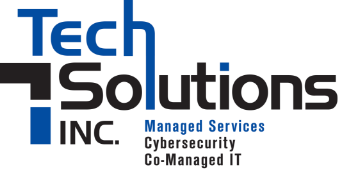As we look to 2025, the tech industry is poised for transformative changes. From advancements in artificial intelligence to evolving cybersecurity frameworks, businesses must adapt to stay competitive. Let’s explore the key trends driving innovation and shaping the future of technology in the coming year.
- Generative AI and Advanced AI Models: Generative AI has revolutionized industries by creating high-quality content, including text, images, and videos. Tools like Microsoft Copilot and OpenAI’s ChatGPT are enabling businesses to streamline operations and enhance productivity. However, as AI becomes a commonplace tool in both the workplace and households, organizations must address challenges like data privacy, ethical AI use, and the risks of AI-generated misinformation. Implementing AI use is essential for all companies if they want to keep up in terms of both output and efficiency in the new year.
- Passwordless Authentication: The era of passwordless authentication is upon us. Traditional passwords are increasingly vulnerable to breaches due to human error and sophisticated cracking techniques. By adopting biometric systems like facial recognition or hardware-based security keys, businesses can enhance security and provide a seamless user experience. We will soon see the familiar 16-character complex passphrase be left behind.
- Sophisticated Social Engineering: Social engineering attacks have grown more sophisticated alongside advancements in AI, with bad actors leveraging AI tools to craft convincing phishing emails or fake personas. For instance, deepfake technology can simulate realistic voice or video messages to deceive victims. Businesses must prioritize employee training and deploy advanced email and behavioral security systems to counter these threats.
- Zero Trust Architecture: Zero Trust Network Architecture (ZTNA) has become a critical cybersecurity strategy, emphasizing ‘never trust, always verify.’ By continuously authenticating users and devices, and limiting access to only what is necessary, ZTNA helps organizations protect sensitive data and mitigate insider threats. With the continued scope of remote work and hybrid environments, implementing ZTNA will be a key priority for IT leaders in 2025.
- Quantum Computing Risks and Opportunities: Quantum computing holds immense potential to solve problems beyond the capabilities of traditional computers. However, its ability to break current encryption methods poses a significant cybersecurity risk. The U.S. National Institute of Standards and Technology (NIST) has already started standardizing post-quantum cryptographic methods to address this threat and better prepare for it to become commonplace. Organizations must begin adopting quantum-resistant cryptographic algorithms to protect sensitive data. Fields such as logistics, drug discovery, and financial modeling will benefit from quantum computing breakthroughs.
- IoT Security and Edge Computing: By 2025, there will be over 75 billion IoT devices globally, creating vast networks of interconnected devices. This explosion increases the risk of cyberattacks targeting IoT endpoints. Businesses are adopting edge computing solutions to process data locally rather than in centralized data centers, reducing latency and enhancing security. Because of this, organizations must secure IoT devices through stronger authentication protocols, firmware updates, and segmentation of IoT networks to prevent large-scale breaches
As technology evolves, staying informed about these trends will be essential for businesses to remain competitive and secure. Organizations must not only embrace innovation but also proactively address emerging risks to thrive in 2025 and beyond.

